Essential lead generation services
- Jotform
- Marketo
- Callingly
- HubSpot
- Zapier
- Asana
- Keap
- Pardot (by Salesforce)
- Campaign Monitor
- SharpSpring
- Pipedrive
- MyEmma
- Adobe Marketing Cloud
- Socialdraft
When you’re just starting out, manually handling your lead generation is all your startup business can afford. Unfortunately, manual lead generation isn’t the most efficient process. In fact, it’s often ineffective and insufficient when growing and scaling your company.
According to Salesforce, 21 percent of a B2B sales rep’s time is spent merely performing lead research — and when you’re paying the salaries that top salespeople command, manual lead generation isn’t a good use of their time and your money.
The solution is automated lead generation software. There are myriad companies to choose from to assist in lead generation strategy and management, as well as thousands of features to consider. Using lead generation software can be complicated and expensive if you don’t use it to its full capability, so it’s essential to understand how these tools work and what features they boast before choosing one.
What is lead generation software?
Lead generation software is a system that automates the segmentation, capture, and management of your sales leads. Some lead generation software also nurtures those leads, which can allow the business owner or manager to more efficiently manage their time and the leads.
Here’s one example of how lead generation software works. (See Chapter 3: Optimizing your site for lead generation for more tips on creating the best forms and pages on your website.) You’ve displayed an offer that the site visitor wants, and so they enter their information into your form. The visitor has now become a lead — and lead generation software automates the capture of that information and can help you sort, distribute, or in any other way manage that lead.
Rather than someone manually combing through collected lead information, automated platforms help distribute and analyze the data. This allows the salesperson to focus on quality leads, and automates the interactions with visitors to encourage them to become leads.
Once those leads are at the beginning of your sales funnel, the lead nurturing functions of lead generation platforms can assist in moving those prospects through the stages of the funnel to that final purchase. It can also assist with maintaining lines of communication with your customers, encouraging them to stay with you and potentially upselling them or reselling to them in the future.
If your salespeople are chasing too many cold leads, they face hard sells and people who weren’t initially interested in the product you’re selling. However, if your salespeople have been in constant contact with warm leads, or people who are ready and willing to buy your services, they will be able to make more sales and, thus, more profit for the company. Additionally, automated software can keep salespeople in contact with cold leads, giving them information and possibly assisting in moving them from the “cold” to the “warm” category.
Your lead generation software can also be vital in keeping accurate contact information for your leads. Data from marketing lists, social media, referrals, trade shows, word-of-mouth recommendations, and even search engine marketing can become inaccurate or can be missing critical pieces of data.
To recap, lead generation software is a powerful tool. It can help you
- Find leads
- Convert visitors to leads
- Identify hot and cold prospects and leads
- Disseminate large quantities of data to assist in developing optimized marketing strategies
- Schedule new campaigns
- Shorten the timespan of existing campaigns by automating complex processes
- Automate lead nurturing (see Chapter 9 for more information about nurturing your leads through every step of the process)
- Score those warm and cold leads to help figure out which ones should be pursued
- And more
What to look for in lead generation software
Some of the most important things to look for in lead generation software are tools to create forms and landing pages. Just as important, however, are the tools that the software can connect to. Integrations are important because even the most robust lead generation software can’t do it all. Once you capture your leads, you’ll want to send them emails, add them to your CRM, track their activity, and more.
Most lead generation tools have a number of native integrations to the tools you’re already using. For everything else, you can use something like Zapier, a third-party integration tool that connects to 1,000+ apps. No matter which tools you’re using to generate and capture leads, Zapier can seamlessly send these leads to the other apps in your marketing stack.
Other helpful options are social media, lead segmentation, and lead assignment integration.
Lead segmentation software should be able to break up data in a way that best suits your business’s needs. Important factors to consider are demographics (job title, company size, location, etc.), referral source (web page, landing page, offer form, social media, etc.), and behavior (e.g., the type of offer downloaded). Some software focuses on specific industries (such as healthcare or hospitality). Picking the tool that provides the most data for your market will aid in your sales process.
Remember to pick a software system that’s right for the size of your company. If you are a tiny, lean team, it might not make sense to shell out the huge bucks yet for an expensive system — there might even be a free option. Choose software you can grow into, but don’t pick something that may have more bells and whistles than you’ll use in the next five years.
Other essential decision-making factors include
- The stages of the customer relationship covered (e.g., contact to conversion)
- Cloud vs desktop accessibility
- Simple vs advanced functionality
- Native integrations with other sales software (e.g., your current CRM or Salesforce, Microsoft Dynamics, Google Cloud)
- Customer segmentation
- IP tracking
Also, consider using software that fits your sales model — whether B2B or B2C .
According to Forrester, 66 to 90 percent of your customer’s journey from initial search to buying is self-directed. That is why it’s imperative that your marketing and sales efforts get in front of the right people, the first time. There are many aspects to getting found and leading that person to your sales funnel, such as SEO, social media, and advertising. Using lead generation software will make it easier to tie all the pieces into one uniform package, which in turn frees up the sales and marketing people to engage more potential leads and make more sales.

Some of the best of lead generation software (out of 5 $$$$$)
- Jotform $
- Marketo $$$$$
- Callingly $
- HubSpot $$$
- Zapier $
- Asana $
- Keap $$$
- Pardot (by Salesforce) $$$$$
- Campaign Monitor $
- SharpSpring $$
- Pipedrive $$$
- MyEmma $$$
- Adobe Marketing Cloud $$$$$
- Socialdraft $
Jotform is workspace software that enables streamlined workflows from lead capture to sales interaction. Jotform combines best-in-class forms and surveys for lead collection with notification, collaboration, and approval tools, allowing teams to shift easily from lead to action. A full suite of payment, CRM, data management, and analytics integrations ensure your marketing and sales efforts achieve their potential.
Marketo is considered a leader in lead generation software, offering a cloud-based platform to monitor and manage customer engagement. Integrated into the platform are social marketing, automated marketing, lead nurturing, budget management, sales insights, website personalization, and analytics (so you can track every aspect of your lead generation process.)
Callingly is a new company that immediately and automatically gets your salespeople on the phone with a lead as soon as they enter their information on your website. When you wait too long to follow up with a lead about their inquiry, you reduce your closing effectiveness. But when you automatically get them on the phone, your conversion numbers increase substantially.
HubSpot is a leader in online marketing, so it’s no surprise it has one of the best-automated marketing software offers on the market . The all-in-one platform is cloud-based and accessible from any device. Create and manage your web presence, manage online traffic and leads, and use integrated analytic metrics to nurture and tweak marketing campaigns. With both B2B and B2C models, you’ll be able to efficiently manage accounting, construct lead generation tools, and target the right industries.
As we stated above, Zapier allows you to connect all of your apps to one another, making it invaluable for your lead generation efforts. With Zapier, you can send your lead generation form information to just about any CRM, email marketing service, spreadsheet, or cloud storage service around.
Asana is world-class work management software that allows your team to manage and collaborate on projects. It also happens to be perfect for helping your team follow a sales playbook, especially newer members of your sales team. Each step in a sales playbook can be shown as a to-do item, with the ability to label, sort, comment, and calendarize each step.
Keap, formerly known as InfusionSoft, was built with smaller sales and marketing teams in mind. It allows you to manage customer relationships and pick categories from a variety of industries, like hospitality, education, and health care.
Salesforce created Pardot for B2B companies that need more niche sales and marketing automation. A robust email marketing system helps to support the longer timetable and multitiered sales process that’s usually involved in B2B sales.
Campaign Monitor is a cloud-based marketing system that’s more focused on subscriptions, email (like newsletters), and report generation. It can be used to create custom email marketing campaigns, and the price tag is great for smaller businesses.
SharpSpring is cloud-based and offers marketing automation, mobile and social marketing, customer relationship management, sales automation, customer service, and more. If you’re already using a CRM, SharpSpring claims to integrate with any platform on the market, so no transition is necessary.
Pipedrive is more sales than marketing focused, and was created to assist small sales teams in managing and growing their sales. Pipedrive’s focus is on the salesperson, giving them tools and training to manage all aspects of the sales cycle.
MyEmma, or Emma, is an email marketing platform that allows users to design email campaigns from scratch or using one of its tried-and-true email templates. The cloud-based platform is accessible on any device and can help marketing teams manage email communication; break down granular demographic information; and review spending, open rate, or any history.
From the makers of the beloved editing software line (Photoshop, Illustrator, InDesign, etc.) comes an integrated marketing platform to access, organize, and curate marketing content. Included in the suite is access to Adobe Analytics, Target, Social, Experience Manager, Advertising Cloud, and Campaign, all accessible via a real-time dashboard and intuitive interface. If you’re used to working with other Adobe platforms, then switching to this software will be a smooth transition for any marketing team.
Social media marketing can get complicated, especially if you’re managing multiple accounts. Socialdraft is a cloud-based platform that incorporates Facebook, Facebook Groups and Pages, Twitter, LinkedIn, Pinterest, and Instagram, allowing for numerous channels, content scheduling, bulk uploads, reports, and alerts. Schedule your posts using a content creation calendar, with a drag-and-drop display that makes it easy.
RECOMMENDED ARTICLES






























































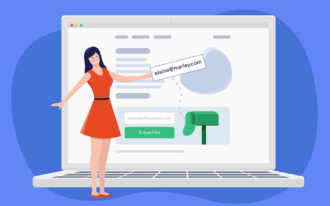
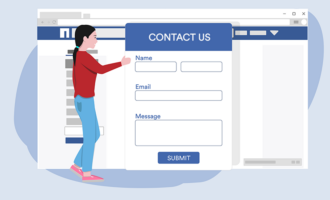
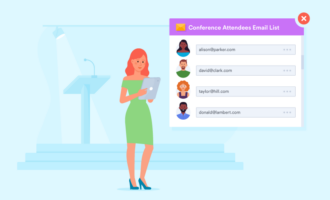

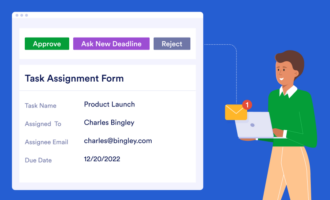








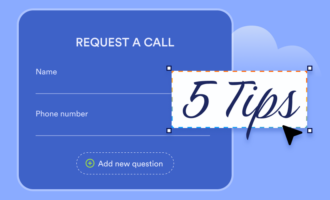


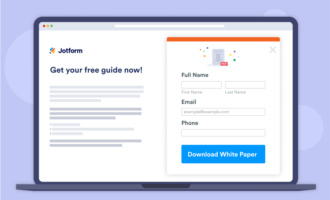
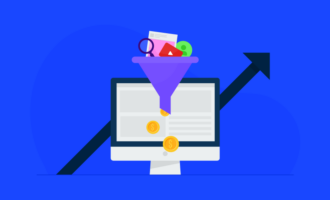




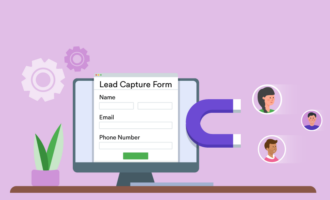














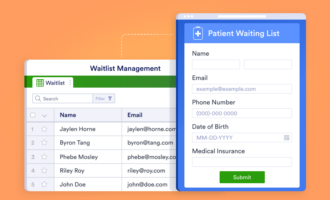





Send Comment:
1 Comments:
More than a year ago
Lead generation software really helps in managing all inbound leads and make sure that no valid potential customers are lost in the process. I think as suggested in the article, professionals should also look at industry-specific lead generation software. It can totally be an added advantage. Great article!